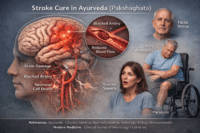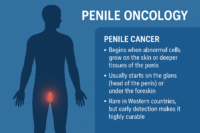Migraines are more than just headaches; they are debilitating neurological events that can significantly impact the quality of life. Affecting millions of people worldwide, migraines are characterized by intense, throbbing pain typically on one side of the head, often accompanied by nausea, vomiting, and extreme sensitivity to light and sound. Understanding migraines, their triggers, and how to manage them is crucial for those who suffer from these intense episodes and for those who care for them.
What is a Migraine?
A migraine is a complex condition with a wide variety of symptoms. For many people, the main feature is a painful headache. The pain is typically severe, often described as throbbing or pulsating, and is usually felt on one side of the head. However, about one-third of migraine sufferers experience pain on both sides.
Migraines can last from a few hours to several days, and the frequency of attacks can vary from person to person. Some individuals may experience migraines a few times a year, while others may have them multiple times a week.
Migraines are more common in women than men, with hormonal changes playing a significant role in this disparity. They often start in adolescence and are most common during middle age. However, they can begin at any age, and even children can suffer from migraines.
The Phases of a Migraine
Migraines typically progress through four stages, though not everyone experiences all stages. Understanding these phases can help in managing and potentially preventing a full-blown migraine attack.
1. Prodrome: This early warning stage occurs one or two days before a migraine. Symptoms can include mood changes, food cravings, neck stiffness, increased thirst and urination, and frequent yawning. Recognizing these signs can help in taking preventive measures.
2. Aura: Not all migraine sufferers experience an aura, but for those who do, it typically occurs before or during the migraine. Auras are symptoms of the nervous system and are usually visual disturbances, such as seeing flashes of light or zigzag patterns. Auras can also include sensory, motor, or speech disturbances.
3. Attack: The migraine attack itself can last from four hours to three days if untreated. Symptoms include throbbing or pulsing pain, usually on one side of the head, but sometimes on both. Other symptoms include sensitivity to light, sound, and sometimes smell and touch, nausea, and vomiting.
4. Postdrome: The final phase, postdrome, occurs after the headache. During this time, individuals may feel drained, confused, or generally unwell. Some report feeling euphoric. The postdrome phase can last a day or more.
Causes and Triggers of Migraines
The exact cause of migraines is not fully understood, but they are thought to be the result of abnormal brain activity temporarily affecting nerve signals, chemicals, and blood vessels in the brain.
Genetics plays a role in migraines, as they tend to run in families. If one or both of your parents have migraines, you are more likely to develop them as well. However, migraines can also be triggered by a variety of environmental and lifestyle factors. Common triggers include:
•Hormonal changes: Many women experience migraines in connection with their menstrual cycle, pregnancy, or menopause. Hormonal medications, such as birth control pills, can also trigger migraines.
•Food and drink: Certain foods and drinks, such as aged cheeses, processed foods, alcohol (especially red wine), and caffeinated beverages, are common migraine triggers. Skipping meals or fasting can also lead to a migraine.
•Stress: Emotional stress is one of the most common triggers of migraines. Stress can increase muscle tension, lead to changes in sleep patterns, and cause other physical reactions that can trigger a migraine.
•Sensory stimuli: Bright lights, loud sounds, and strong smells (such as perfume, paint, or cigarette smoke) can trigger migraines in some individuals.
•Changes in sleep patterns: Both missing sleep and oversleeping can trigger migraines. Maintaining a regular sleep schedule is important for managing migraines.
•Physical exertion: Intense physical activity, including exercise, can trigger migraines, especially if you are dehydrated or have low blood sugar.
•Weather changes: Changes in weather, particularly changes in barometric pressure, can trigger migraines in some people.
Diagnosing Migraines
If you suspect that you suffer from migraines, it is important to seek a proper diagnosis from a healthcare provider. Migraines can be confused with other types of headaches, such as tension headaches or sinus headaches, so an accurate diagnosis is essential for effective treatment.
To diagnose migraines, your doctor will review your medical history, ask about your symptoms, and perform a physical and neurological examination. They may also ask you to keep a headache diary to track your symptoms, triggers, and response to treatment.
In some cases, additional tests such as MRI or CT scans may be necessary to rule out other conditions that could be causing your headaches.
Treatment Options for Migraines in Modern Science (Allopathy Medicines)
There is no cure for migraines, but various treatments are available to help manage the symptoms and reduce the frequency of attacks. Treatment options fall into two main categories: acute treatments and preventive treatments.
Acute Treatments: These treatments are used to relieve the symptoms of a migraine once it has started. They work best when taken at the first sign of a migraine. Acute treatments include:
•Over-the-counter pain relievers: Common pain relievers like ibuprofen, aspirin, or acetaminophen can be effective for mild migraines. However, overuse can lead to rebound headaches, so they should be used sparingly.
•Triptans: These prescription medications are specifically designed to treat migraines. They work by constricting blood vessels and blocking pain pathways in the brain.
•Ergots: Ergots are another class of prescription drugs that can help with migraines, particularly if taken early in the attack.
•Anti-nausea medications: These can be helpful if your migraine is accompanied by nausea and vomiting.
•CGRP inhibitors: A newer class of medications that targets calcitonin gene-related peptide (CGRP), which is involved in migraine attacks.
Preventive Treatments: Preventive treatments are used to reduce the frequency, severity, and duration of migraines. These are generally prescribed if you have frequent migraines (more than four a month) or if your migraines are particularly severe. Preventive treatments include:
•Beta-blockers: These medications, commonly used to treat high blood pressure, can help prevent migraines.
•Antidepressants: Some types of antidepressants, particularly tricyclic antidepressants, can help prevent migraines by affecting the levels of serotonin and other chemicals in the brain.
•Anti-seizure medications: These drugs, which are used to treat epilepsy, can also help reduce the frequency of migraines.
•CGRP inhibitors: In addition to being used acutely, CGRP inhibitors can also be used preventively to reduce the frequency of migraines.
•Botox: For chronic migraines, Botox injections can help by blocking the release of certain chemicals involved in pain transmission.
Lifestyle Modifications: In addition to medication, certain lifestyle changes can help manage migraines. These include:
•Maintaining a regular sleep schedule: Going to bed and waking up at the same time every day can help prevent migraines.
•Eating regular meals: Skipping meals can trigger migraines, so it’s important to eat regularly and include healthy, balanced meals.
•Staying hydrated: Dehydration is a common migraine trigger, so make sure to drink plenty of water throughout the day.
•Managing stress: Stress is a major trigger for migraines. Techniques such as yoga, meditation, deep breathing, and regular exercise can help manage stress levels.
•Avoiding known triggers: If you know certain foods, activities, or environmental factors trigger your migraines, take steps to avoid them.
The Impact of Migraines on Daily Life
Migraines can have a significant impact on daily life. The pain and other symptoms can make it difficult to perform daily tasks, go to work or school, and enjoy social activities. Many people with migraines also experience anxiety and depression as a result of their condition.
Migraines can also affect relationships, as the unpredictability of attacks can make it challenging to make and keep plans. Loved ones may not always understand the severity of the condition, leading to feelings of isolation.
For those who suffer from chronic migraines (15 or more days a month), the impact can be particularly severe. Chronic migraines can lead to missed work or school, reduced productivity, and a lower overall quality of life.
Coping with Migraines
Coping with migraines involves not only managing the symptoms but also finding ways to minimize the impact on your life. Here are some strategies that can help:
•Educate yourself: The more you understand about migraines, the better you can manage them. Stay informed about new treatments, and be proactive in managing your condition.
•Communicate with your healthcare provider: Work closely with your doctor to find a treatment plan that works for you. Don’t hesitate to discuss any concerns or side effects you experience with your medications.
•Build a support system: Having a support system of friends, family, and other migraine sufferers can provide emotional support and practical advice.
•Prepare for migraines: Keep your migraine medications and any other necessary supplies (such as a cold pack or a dark, quiet room) readily available so that you can act quickly at the first sign of an attack.
•Practice relaxation techniques: Stress is a major migraine trigger, so learning how to relax can be beneficial. Techniques such as progressive muscle relaxation, guided imagery, or mindfulness meditation can help reduce stress levels.
•Adjust your environment: If sensory stimuli like bright lights or loud noises trigger your migraines, make adjustments
Two Ayurvedic Formulas to Cure Migraine
Migraine Remedy: Part 1
Ingredients:
•Raw Dhania (Coriandrum sativum): 10 grams
•Khaskhas (Poppy Seeds) Papaver somniferum: 10 grams
•Raw Almond (Prunus dulcis): 10 grams
•Long Melon Seeds (Cucumis Melo): 10 grams
•Pista (Pistacia vera): 10 grams
Preparation Method:
1.Take 10 grams of each ingredient listed above and grind them into a fine powder.
2.Heat 50 ml of organic cow ghee and 1 liter of cow milk.
3.Add the powdered ingredients to the milk along with white sugar candy to taste.
4.Boil the milk mixture until it reduces to 500 ml.
Dosage:
Drink 250 ml of this milk mixture every morning for 50 to 60 days to achieve a complete cure. If the migraine condition is chronic, the treatment may take a little longer.
Migraine Remedy: Part 2
Ingredients:
•Ras Sindoor: 3 grams
•Abhrak Bhasma: 3 grams
•Tamra Bhasma (Pure Copper Tamra Bhasma): 3 grams
•Lauh Bhasma: 3 grams
•Parad Gandhak Kajjali: 100 grams
•Shuddha Guggul: 10 grams
•Harad or Hartaki (Terminalia chebula): 10 grams
•Amla (Phyllanthus emblica Linn): 10 grams
•Dashmool (Aegle marmelo): 10 grams
Preparation Method:
1.Ensure all the ingredients are in powder form.
2.Mix them together thoroughly to form a uniform blend.
Dosage:
Take 800 mg of the powder mixture with one spoon of honey twice a day for 30 to 40 days. If the migraine condition is chronic, the duration of the treatment may need to be extended for optimal results.
Why These Remedies Work
Both parts of this migraine treatment use a combination of Ayurvedic and natural ingredients known for their therapeutic properties. These remedies focus on balancing the body’s internal systems, addressing the root causes of migraines, and promoting overall wellness.
•Raw Dhania and Khaskhas have anti-inflammatory properties that help in reducing the severity of migraine pain.
•Almonds and Pista provide essential fatty acids and nutrients that nourish the brain, improving its resistance to migraine triggers.
•Long Melon Seeds support hydration and provide magnesium, a mineral often deficient in migraine sufferers.
•The powerful blend in Part 2, including Ras Sindoor, Abhrak Bhasma, and Lauh Bhasma, works to strengthen the nervous system, improve blood circulation, and detoxify the body.
Final Thoughts
These ancient remedies for migraines have stood the test of time due to their effectiveness and holistic approach. By following the preparation methods and dosage instructions, individuals suffering from migraines can find relief and potentially cure their condition. However, as with any treatment, it is important to consult with an Ayurvedic doctor or healthcare provider before starting these remedies, especially if the condition is chronic or if there are other underlying health concerns.









